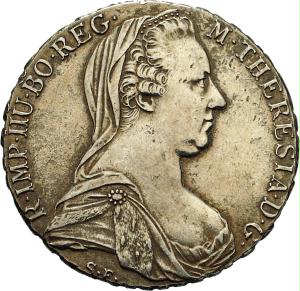
Due to its decimal structure the franc can only be a creation of the French Revolution. One of the fathers of the new coin is the gentleman shown here: Napoleon Bonaparte - general, emperor and, at the end of his life, an exile on the island of St. Helena. The French currency had been weakened by inflation and the constant degradation of the metals used for centuries. At the beginning of the
 French Revolution the inflation increased and saved assets continued losing value. People took their gold and silver abroad to save them. As a result emergency currencies and paper bills were issued. In 1794 the leaders decided in Paris that the French monetary system had to be reorganised and reformed. One year later, in 1795, the new currency, the franc based on 5 grams of silver was officially issued. This is fine but it does make one ask the following question: Where did the finances come from to enable this reform? This is where the little man from the island of Corsica comes in. The French finances vastly profited from Napoleon's victorious military campaigns and wars. In 1797 the French treasury received over 50 million francs only from the booty of Napoleon's Italian campaign.
French Revolution the inflation increased and saved assets continued losing value. People took their gold and silver abroad to save them. As a result emergency currencies and paper bills were issued. In 1794 the leaders decided in Paris that the French monetary system had to be reorganised and reformed. One year later, in 1795, the new currency, the franc based on 5 grams of silver was officially issued. This is fine but it does make one ask the following question: Where did the finances come from to enable this reform? This is where the little man from the island of Corsica comes in. The French finances vastly profited from Napoleon's victorious military campaigns and wars. In 1797 the French treasury received over 50 million francs only from the booty of Napoleon's Italian campaign.







